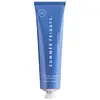What's inside
What's inside
 Key Ingredients
Key Ingredients

 Benefits
Benefits

 Concerns
Concerns

 Ingredients Side-by-side
Ingredients Side-by-side

Tranexamic Acid
AstringentDipotassium Glycyrrhizate
HumectantSodium Acetylated Hyaluronate
HumectantSodium Hyaluronate
HumectantGlutamic Acid
HumectantPlant Ash Extract
Water
Skin ConditioningButylene Glycol
HumectantGlycerin
HumectantDipropylene Glycol
HumectantCetyl Ethylhexanoate
EmollientDiglycerin
HumectantPhthalic Anhydride
Behenyl Alcohol
EmollientC20 Olefin
Hydrogenated Egg Oil
Skin ConditioningPentaerythrityl Tetraethylhexanoate
EmollientErythritol
HumectantPolyethylene
AbrasiveDimethicone
EmollientPetrolatum
EmollientCopernicia Cerifera Wax
Batyl Alcohol
EmollientPEG-7 Glyceryl Cocoate
EmulsifyingMethacrylic Acid/Sodium Acrylamidomethyl Propane Sulfonate Copolymer
Trimethylsiloxysilicate
EmollientC8-9 Isoparaffin
SolventSodium Citrate
BufferingEthylene/Propylene Copolymer
AbrasiveSodium Metaphosphate
BufferingSuccinoglycan
Skin ConditioningCitric Acid
BufferingSodium Metabisulfite
AntioxidantPhenoxyethanol
PreservativeTranexamic Acid, Dipotassium Glycyrrhizate, Sodium Acetylated Hyaluronate, Sodium Hyaluronate, Glutamic Acid, Plant Ash Extract, Water, Butylene Glycol, Glycerin, Dipropylene Glycol, Cetyl Ethylhexanoate, Diglycerin, Phthalic Anhydride, Behenyl Alcohol, C20 Olefin, Hydrogenated Egg Oil, Pentaerythrityl Tetraethylhexanoate, Erythritol, Polyethylene, Dimethicone, Petrolatum, Copernicia Cerifera Wax, Batyl Alcohol, PEG-7 Glyceryl Cocoate, Methacrylic Acid/Sodium Acrylamidomethyl Propane Sulfonate Copolymer, Trimethylsiloxysilicate, C8-9 Isoparaffin, Sodium Citrate, Ethylene/Propylene Copolymer, Sodium Metaphosphate, Succinoglycan, Citric Acid, Sodium Metabisulfite, Phenoxyethanol
Water
Skin ConditioningCaprylic/Capric Triglyceride
MaskingDiheptyl Succinate
EmollientButyrospermum Parkii Butter
Skin ConditioningCetearyl Alcohol
EmollientHydroxyethyl Acrylate/Sodium Acryloyldimethyl Taurate Copolymer
Emulsion StabilisingNiacinamide
SmoothingPentylene Glycol
Skin ConditioningGlycerin
HumectantSorbitan Stearate
EmulsifyingGlyceryl Stearate
EmollientSodium Hyaluronate
HumectantCeramide EOP
Skin ConditioningCeramide NP
Skin ConditioningCeramide AP
Skin ConditioningAminopropyl Ascorbyl Phosphate
AntioxidantAllantoin
Skin ConditioningBisabolol
MaskingPanthenol
Skin ConditioningPhysalis Angulata Extract
Skin ProtectingCastanea Sativa Seed Extract
Skin ConditioningTocopheryl Acetate
AntioxidantPhytosphingosine
Skin ConditioningCapryloyl Glycerin/Sebacic Acid Copolymer
Skin ConditioningEthylhexylglycerin
Skin ConditioningTetrasodium Glutamate Diacetate
Cucumis Sativus Fruit Extract
EmollientCholesterol
EmollientSodium Lauroyl Lactylate
EmulsifyingCarbomer
Emulsion StabilisingXanthan Gum
EmulsifyingPEG-100 Stearate
Phenoxyethanol
PreservativeWater, Caprylic/Capric Triglyceride, Diheptyl Succinate, Butyrospermum Parkii Butter, Cetearyl Alcohol, Hydroxyethyl Acrylate/Sodium Acryloyldimethyl Taurate Copolymer, Niacinamide, Pentylene Glycol, Glycerin, Sorbitan Stearate, Glyceryl Stearate, Sodium Hyaluronate, Ceramide EOP, Ceramide NP, Ceramide AP, Aminopropyl Ascorbyl Phosphate, Allantoin, Bisabolol, Panthenol, Physalis Angulata Extract, Castanea Sativa Seed Extract, Tocopheryl Acetate, Phytosphingosine, Capryloyl Glycerin/Sebacic Acid Copolymer, Ethylhexylglycerin, Tetrasodium Glutamate Diacetate, Cucumis Sativus Fruit Extract, Cholesterol, Sodium Lauroyl Lactylate, Carbomer, Xanthan Gum, PEG-100 Stearate, Phenoxyethanol
 Reviews
Reviews

Ingredients Explained
These ingredients are found in both products.
Ingredients higher up in an ingredient list are typically present in a larger amount.
Glycerin is already naturally found in your skin. It helps moisturize and protect your skin.
A study from 2016 found glycerin to be more effective as a humectant than AHAs and hyaluronic acid.
As a humectant, it helps the skin stay hydrated by pulling moisture to your skin. The low molecular weight of glycerin allows it to pull moisture into the deeper layers of your skin.
Hydrated skin improves your skin barrier; Your skin barrier helps protect against irritants and bacteria.
Glycerin has also been found to have antimicrobial and antiviral properties. Due to these properties, glycerin is often used in wound and burn treatments.
In cosmetics, glycerin is usually derived from plants such as soybean or palm. However, it can also be sourced from animals, such as tallow or animal fat.
This ingredient is organic, colorless, odorless, and non-toxic.
Glycerin is the name for this ingredient in American English. British English uses Glycerol/Glycerine.
Learn more about GlycerinPhenoxyethanol is a preservative that has germicide, antimicrobial, and aromatic properties. Studies show that phenoxyethanol can prevent microbial growth. By itself, it has a scent that is similar to that of a rose.
It's often used in formulations along with Caprylyl Glycol to preserve the shelf life of products.
Sodium Hyaluronate is hyaluronic acid's salt form. It is commonly derived from the sodium salt of hyaluronic acid.
Like hyaluronic acid, it is great at holding water and acts as a humectant. This makes it a great skin hydrating ingredient.
Sodium Hyaluronate is naturally occurring in our bodies and is mostly found in eye fluid and joints.
These are some other common types of Hyaluronic Acid:
Learn more about Sodium HyaluronateWater. It's the most common cosmetic ingredient of all. You'll usually see it at the top of ingredient lists, meaning that it makes up the largest part of the product.
So why is it so popular? Water most often acts as a solvent - this means that it helps dissolve other ingredients into the formulation.
You'll also recognize water as that liquid we all need to stay alive. If you see this, drink a glass of water. Stay hydrated!
Learn more about Water